When it comes to fasteners like screws, bolts, and nails, proper storage and organization often take a back seat. Yet, how you store these items is crucial for their longevity, not to mention keeping your workspace tidy. In this comprehensive guide, we delve into tips and strategies to ensure you’re storing your screws and fasteners in a manner that not only prolongs their life but also streamlines your operations.
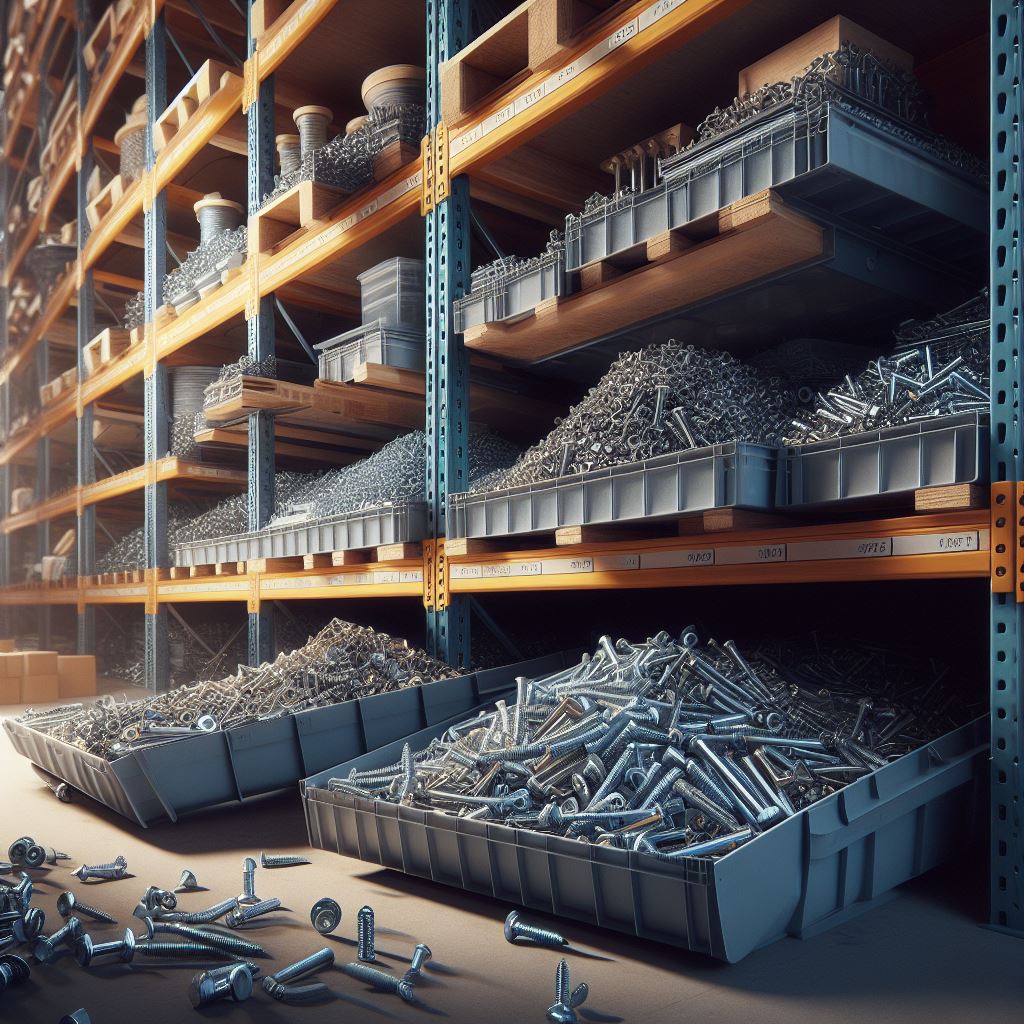
Table of Contents
Why Proper Storage Matters: More Than Just Organization
The importance of proper storage and organization for screws and fasteners extends far beyond just keeping your workspace tidy. While it may seem like a mundane task, the way you store these essential components can have far-reaching implications for your operations, the integrity of your projects, and even safety. Let’s delve deeper into the critical aspects that make proper storage so crucial.
Longevity: Combatting Rust and Corrosion
One of the most compelling reasons to focus on proper storage is the longevity of your fasteners. Screws, bolts, and other fasteners are often made of metal that is susceptible to rust and corrosion if exposed to moisture or corrosive elements. Storing them in inadequate conditions can result in the fast deterioration of their structural integrity, which not only wastes money but can also compromise the quality of your projects. Using the right storage materials and techniques can significantly prolong the lifespan of your fasteners, ensuring they perform optimally when needed.
Efficiency: Streamlining Your Workflow
In any industrial setting or even a DIY workspace, efficiency is key. Time spent looking for the right screw or bolt is time wasted, and in a fast-paced environment, those minutes can quickly add up. By having a well-organized storage system, you can easily locate what you need, when you need it, and get the job done faster. This enhanced efficiency not only streamlines your operations but can also have a positive impact on your bottom line.
Safety: Reducing Risks and Hazards
The manner in which you store screws and fasteners can directly affect the safety of your workspace. Loose screws, improperly sealed containers, or overcrowded storage units can lead to accidents, including slips, trips, and falls. Additionally, screws and fasteners left in high-traffic areas or near electrical equipment pose risks that can be easily avoided with proper storage solutions. An organized and adequately labeled storage system minimizes these risks, creating a safer environment for everyone involved.
By recognizing the substantial benefits that come from proper storage—namely increased longevity of your materials, improved operational efficiency, and a safer workspace—you’ll be better equipped to implement an effective and sustainable storage solution for your screws and fasteners.
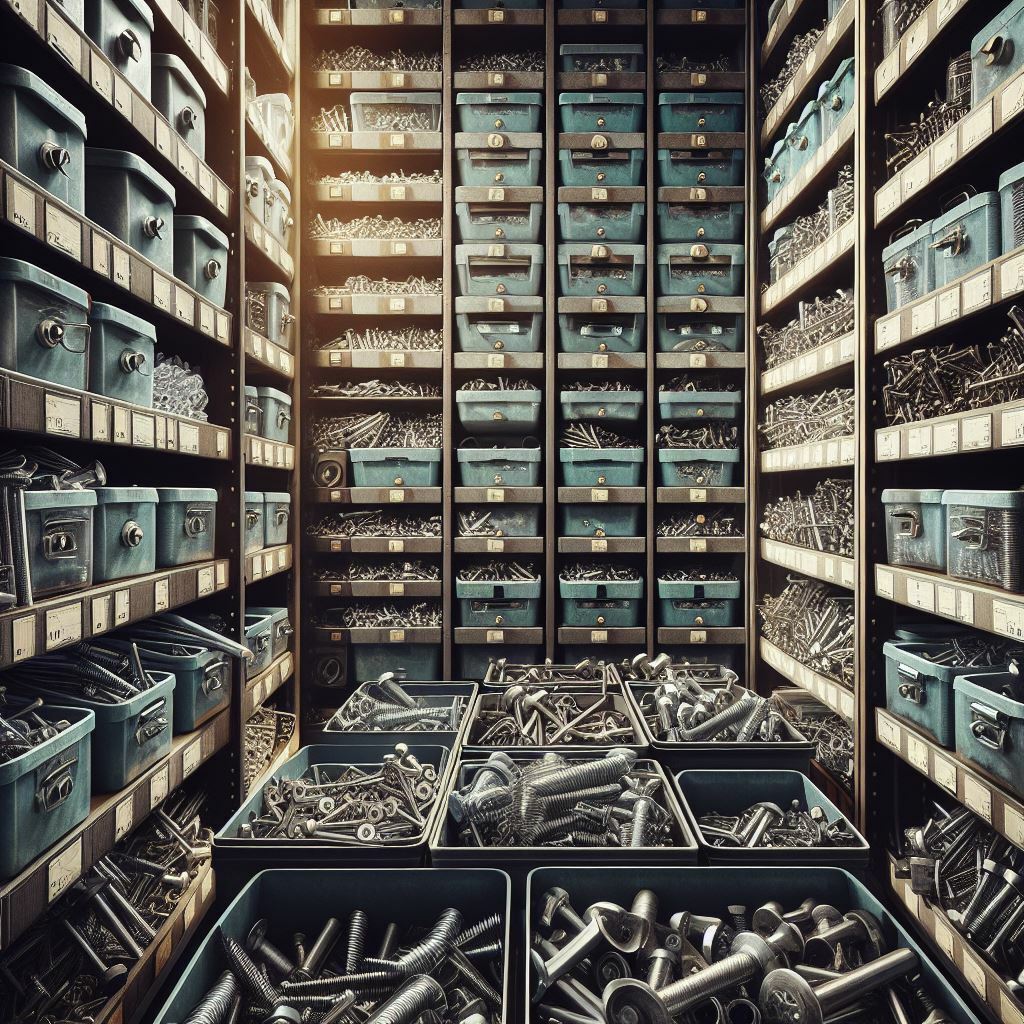
Setting Up a Storage System
Choose the Right Containers: A Critical Step in Your Storage Strategy
The effectiveness of your storage solution is heavily dependent on the type of containers you select. It may seem like a minor detail, but the wrong choice can have unintended negative consequences. From the variety of materials like metal, plastic, and even glass, to the range of features such as compartments and lids, there are multiple factors to consider. Let’s explore why your choice of container is so critical and what you should look for in an ideal storage unit.
Material Matters
As mentioned before, the material of your container plays a vital role, especially concerning the longevity of your screws and fasteners. For instance, metal containers made of stainless steel or aluminum are generally durable and resistant to wear and tear. However, you must ensure they are corrosion-resistant, especially if the screws you’re storing are prone to rusting. On the other hand, plastic containers offer versatility and are lighter in weight but should be of high-quality to withstand temperature fluctuations and prevent cracking. Finally, glass containers can be a viable option for long-term storage if they are kept in a stable environment, given their non-reactive nature.
Size and Compartments
The size of the container and the availability of compartments is another consideration. For those dealing with a broad range of screws and fasteners, containers with multiple compartments can be a godsend, allowing for easy categorization and quick retrieval. Measure your storage space and estimate your needs before purchasing containers. It might be tempting to get the largest container available, but remember that portability can be just as important, especially for on-site jobs.
Sealability and Ventilation
Depending on your specific storage conditions, you may also want to consider containers with sealable lids to keep out dust and moisture. At the same time, adequate ventilation can be crucial to prevent condensation build-up, especially for screws and fasteners made of materials susceptible to corrosion.
Future-Proofing Your Storage
While it’s essential to address your current storage needs, you should also think ahead. Opt for scalable solutions that can grow along with your inventory. Modular storage systems that can be expanded over time offer a great way to future-proof your organization efforts.
By giving careful thought to the type of container you choose, you are not just investing in storage; you’re investing in the quality and longevity of your screws and fasteners. By balancing factors like material, size, and additional features, you can tailor your storage solution to meet your specific needs perfectly.
Best Materials for Storage Containers
Choosing the right material for your storage containers is crucial for maintaining the quality of your screws and fasteners. Here’s a breakdown of commonly used materials and their benefits:
Metal Containers
Metal containers, particularly those made of stainless steel or aluminum, are a classic choice for storing screws and fasteners. They offer durability and are less likely to crack or break compared to other materials. Additionally, metal containers often come with sealable lids, offering an added layer of protection against dust and moisture. However, it’s essential to ensure the metal is corrosion-resistant, especially if you’re storing materials that are susceptible to rust.
Plastic Containers
Plastic storage containers are widely used due to their affordability and versatility. They come in various sizes, shapes, and even compartmentalized designs to help you organize your screws and fasteners better. However, not all plastics are created equal. Look for high-quality, industrial-grade plastic containers that offer some degree of resistance to chemical exposure. The downside is that plastic can sometimes crack under extreme temperature changes, so consider the environment where you’ll be storing these containers.
Glass Containers
Glass containers might not be the first choice for industrial settings due to their fragility, but they have specific advantages. For one, glass does not react with metal, making it an excellent choice for long-term storage. It’s also easy to clean and does not absorb odors or chemicals, which ensures that your screws and fasteners remain in their original condition. However, because glass containers are prone to breakage, they are better suited for a stable, low-movement environment.
By considering the unique pros and cons of each material type, you can make an informed decision about the best storage solution for your screws and fasteners. Each material has its place, depending on your specific needs, whether it’s durability, affordability, or chemical resistance.
Implement a Labeling System
Once you’ve decided on containers, the next step is a robust labeling system. Using either printed labels or a simple marker, make sure you identify each container’s contents clearly.
Labeling Tips for Effective Organization
Proper labeling is the cornerstone of an efficient storage system. Mislabeling or neglecting to label your containers can result in wasted time, inefficient workflow, and even the accidental use of the wrong materials. Here are some strategies to create an effective labeling system.
Use Permanent Markers
When it comes to labeling, the tools you use are just as crucial as the information you’re documenting. Using a permanent marker ensures that the labels you put down will withstand a range of conditions, from moisture to simple wear-and-tear over time. If you’re using plastic or metal containers, make sure to test the marker on a small area first to ensure it doesn’t easily rub off. The aim is to create long-lasting labels that require minimal maintenance.
Consider Color-Coding
Incorporating a color-coding system can significantly streamline your storage process. Each color can signify something different, be it the type of material, size, or application of the screw or fastener. For instance, you could use red for wood screws, blue for machine screws, and yellow for sheet metal screws. By merely glancing at the color, you or anyone else dealing with the fasteners will instantly know what each container holds. This is particularly useful in high-volume or fast-paced settings where time is of the essence.
Update Labels as Inventory Changes
The world of screws and fasteners is ever-evolving, with new types being introduced and old ones being phased out. Your storage should reflect this dynamic nature. Whenever you add a new kind of fastener to your inventory or deplete an existing one, update your labels accordingly. Use this as an opportunity to reassess your organization system and make improvements where necessary. Keeping your labels up-to-date ensures that your storage system remains a reliable resource for identifying exactly what you have on hand.
By implementing these labeling tips into your storage strategy, you can expect to have an effective, organized system that minimizes errors and increases operational efficiency. Remember, the time you invest in setting up an effective labeling system will pay off in the long run by saving you both time and effort in daily operations.
Advanced Storage Solutions: Elevate Your Organization Game
In today’s rapidly evolving industrial landscape, simply having a storage container might not cut it, especially if you’re dealing with a large or varied inventory of screws and fasteners. Advanced storage solutions come into play here, providing a sophisticated approach to managing your resources with maximum efficiency. Let’s explore some of these options in greater detail.
Automated Dispensers
If you’re operating on a large scale or in a high-throughput environment, automated dispensers can be a game-changer. These systems not only sort and store various types of screws and fasteners but also automatically dispense them based on your requirements. This high level of automation minimizes human error, streamlines the workflow, and significantly speeds up the process of locating and using the right fasteners. Moreover, modern automated dispensers come with software that can track inventory levels and even reorder supplies automatically when they run low, further optimizing your operations.
Bin Management Systems
Another advanced solution is a bin management system, which integrates software and hardware to provide real-time data about your inventory. These systems often employ barcodes or RFID tags attached to each storage bin, allowing you to monitor the quantity and location of each type of screw or fastener. When coupled with a comprehensive software interface, bin management systems enable you to get an instant snapshot of your inventory, thereby aiding in better planning and replenishment. It’s an invaluable tool for businesses aiming to embrace a more data-driven approach to inventory management.
Climate-Controlled Storage
Depending on the material of your screws and fasteners, you might also consider climate-controlled storage options. These advanced solutions offer regulated temperature and humidity levels to ensure the longevity of your fasteners. This is particularly crucial for screws and fasteners made from materials prone to rust or corrosion.
By integrating these advanced storage solutions into your operations, you stand to benefit from enhanced efficiency, reduced waste, and a more streamlined workflow. They may require a more substantial initial investment, but the long-term gains in productivity and reduced overhead costs can make it a worthy expenditure.
You may also want to read about screw materials and screw terminology.
Conclusion
Proper storage and organization of screws and fasteners may seem inconsequential, but they have far-reaching impacts on efficiency, longevity, and safety.
If you found this guide helpful, feel free to share it with your network and leave a comment below!
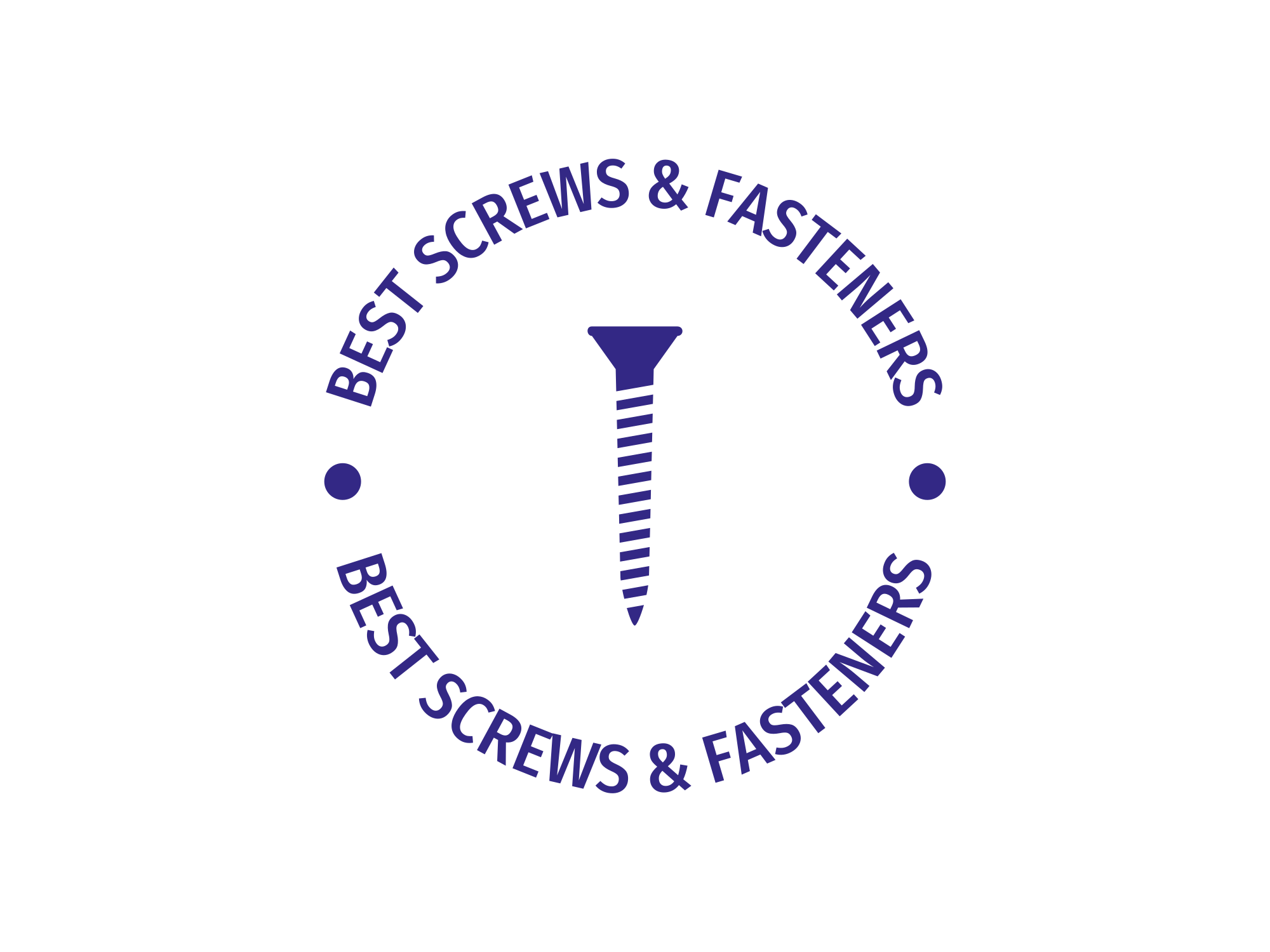
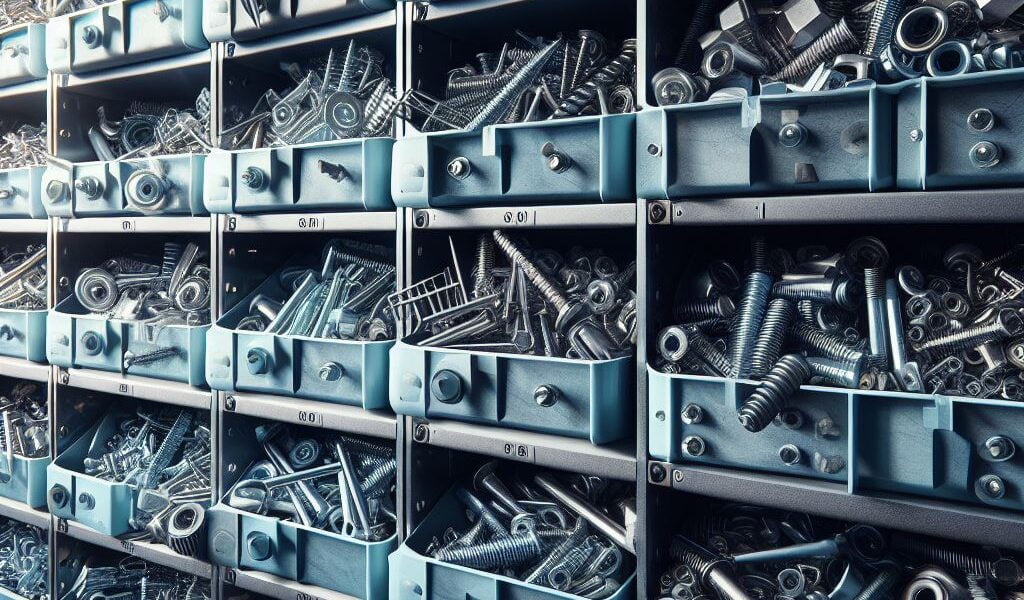
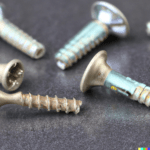
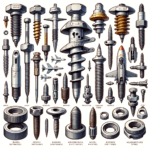
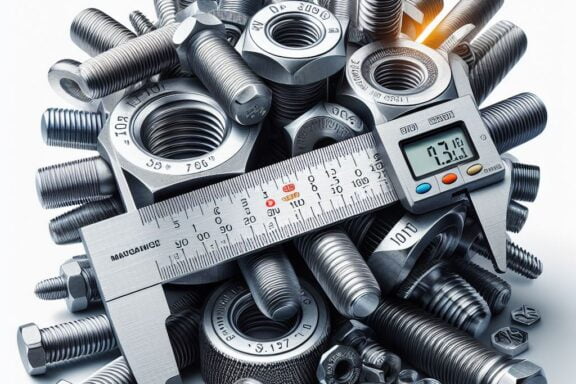
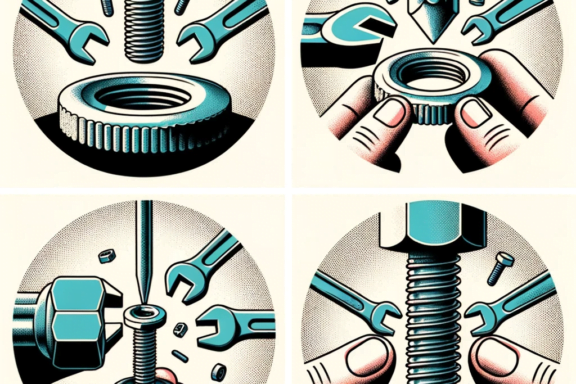
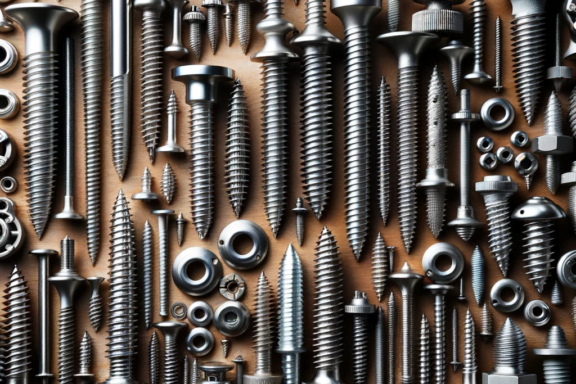
No Comments